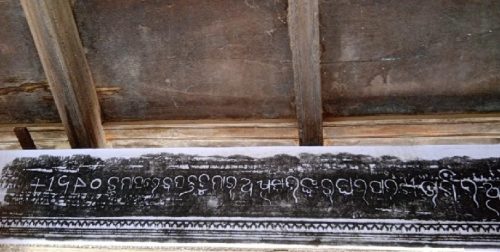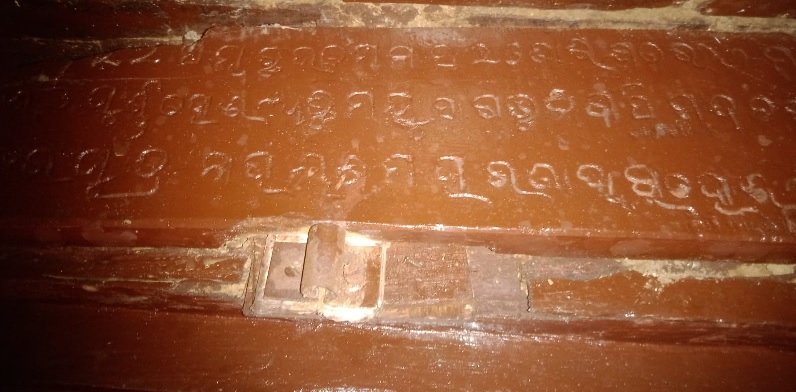Two Rare Wooden Manuscripts Found In Odisha’s Gajapati District

Berhampur: Throwing new light on Odisha’s rich cultural heritage, two rare wooden inscriptions engraved during the first half of 20th century have been found at Paralakhemundi and Ranadevi in Gajapati district.
Bishnu Mohan Adhikari, a history researcher, deciphered these two wooden inscriptions last month. He said when copper and rock-cut inscriptions last for a long time, wooden inscriptions wither away. But finding these two wooden inscriptions in such a good condition is very rare, he added.
The inscriptions were deciphered by Bishnu in presence of ASI officials Meka Venkata Raghavendra Varma and staff on August 20 last. Varma took e-stampage of these two important inscriptions during his visit to Paralakhemundi.

One wooden inscription was engraved in the old Rajaguru Mutt of the famous epigraphist Satya Narayan Rajguru at Chitrakar Sahi in Paralakhemundi. It was originally installed as a wooden block engraved by Narayana Maharana, son of Madana Maharana of Manjusha or Madasa during 1922. Later it was kept and preserved in the doorjamb of renovated Radha Govinda temple by Sitakanta Rajguru, the son of Satya Narayan Rajguru. The deities of the temple were worshipped by Madhusudana Rajaguru from 18th century.
Though Satya Narayan Rajguru deciphered several inscriptions in various parts of India, this wooden inscription has not been deciphered by him. Bishnu Mohan Adhikari deciphered this wooden inscription consisting of three lines.
Similarly, another wooden inscription was found in a house built by late Mohana Adhikari at Ranadevi in 19th century. The ancestors of Lalita Adhikarini had built a temple of Sri Radhakanta in 18th century during the reign of Prataparudra Gajapati. She donated the land to Sri Radhakanta and engaged villagers in the service of God.
Her daughter-in-law Taramani Adhikarini established a small temple of Sri Malllikeswara Swamy after returning from her pilgrimage to Srisailam. The house was renovated by Basanta Kumara Adhikari in 1940. The family left Ranadevi village in 1958 and shifted to nearby Paralakhemundi.
Both these wooden inscriptions have important aspects associated with south Odisha dialect or ‘Ganjami Odia’, said Bishnu.
There 10 to 15 such wooden inscriptions engraved between 17th and 20th century in Odisha. Paralakhemundi, which had more than 20 wooden temples, might have more wooden inscriptions.
Ranadia Matha, Parichha Matha and Panigrahi Matha of Gopini Sahi, Gokulananda Matha near Girls High School have been renovated. However, some other Mathas including Srikaran Sahi Matha, Madan Mohan Matha and Madan Gopal Matha in Katikia Sahi in Paralakhemundi might have some wooden inscriptions and need more nourishment, said the experts.

Comments are closed.